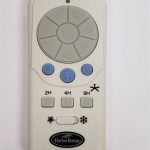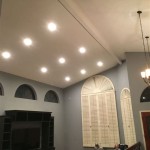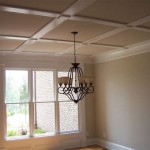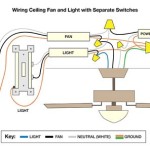How To Remove Water Stains From Acoustic Ceiling Tiles
Acoustic ceiling tiles, also known as suspended ceilings or drop ceilings, are commonly found in commercial and residential buildings. They are valued for their sound-dampening properties and ability to conceal wiring, ductwork, and other utilities. However, acoustic ceiling tiles are also porous and susceptible to water damage. Water stains can detract from the appearance of a room and, if left untreated, can lead to mold growth and structural issues. Addressing these stains promptly and effectively is crucial in maintaining the integrity and aesthetics of the ceiling.
Different types of water stains require different approaches. Minor stains that are relatively new might be removable with simple cleaning techniques. Severe, widespread, or older stains often require more aggressive methods or even tile replacement. Identifying the cause of the water leak is paramount before attempting any cleaning. Without addressing the source of the leak, any cleaning efforts will be temporary and the stain will likely reappear.
This article provides a comprehensive guide on how to remove water stains from acoustic ceiling tiles, covering necessary tools, safety precautions, and various cleaning methods suitable for different stain severities. It emphasizes the importance of identifying and resolving the underlying cause of the water damage and details the steps involved in both cleaning existing stains and preventing future occurrences.
Identifying the Cause of the Water Stain
The first and arguably the most important step in addressing water stains on acoustic ceiling tiles is to identify and rectify the source of the water leak. Cleaning the stain without fixing the leak is merely a cosmetic fix, as the stain will invariably return. Potential sources of leaks include plumbing problems, roof leaks, condensation from HVAC systems, and leaks from appliances located on the floor above.
To pinpoint the source, carefully inspect the area above the stained ceiling tile. This may involve removing the tile (following the instructions provided later in the article) and using a flashlight to examine pipes, ductwork, and the underside of the floor or roof above. Look for any signs of active leaks, such as dripping water, dampness, or mineral deposits.
If the leak originates from a plumbing issue, such as a burst pipe or a leaky fitting, a qualified plumber should be contacted immediately. Similarly, a roof leak may require the attention of a roofing contractor. Condensation issues can often be resolved by improving insulation or ventilation in the affected area. Neglecting to address the underlying cause will only lead to recurring water stains and potential structural damage.
Gathering Necessary Tools and Materials
Before commencing the cleaning process, gathering the necessary tools and materials is essential. Having everything readily available will streamline the cleaning process and minimize disruptions. The specific tools and materials required will depend on the severity of the stain and the chosen cleaning method, but a general list includes:
•
Safety Glasses and Dust Mask:
These are crucial for protecting the eyes and respiratory system from dust and potential mold spores released during cleaning. •Drop Cloth or Plastic Sheeting:
To protect the floor and furniture from falling debris and cleaning solutions. •Soft-Bristled Brush or Sponge:
For gently cleaning the surface of the tiles without causing damage. Avoid using abrasive scrub brushes or pads, as they can damage the acoustic material. •Dry Cleaning Sponge:
This specialized sponge is designed to remove dry residue and soot without requiring water. •Mild Detergent:
A gentle dish soap or specialized ceiling tile cleaner diluted in water. •Spray Bottle:
For applying cleaning solutions in a controlled manner. •Clean, Dry Cloth:
For blotting and drying the cleaned areas. •Ladder or Step Stool:
To safely reach the ceiling tiles. •Utility Knife (Optional):
For scoring around the edges of the tile if it is stuck to the grid. •Replacement Ceiling Tiles (Optional):
If the stain is severe or if the tile is damaged beyond repair. •Primer and Paint (Optional):
For sealing and concealing any residual staining after cleaning. Choose a paint specifically designed for acoustic ceiling tiles to avoid compromising their sound-absorbing properties.Ensuring access to these materials before starting will enable efficient and effective cleaning.
Cleaning Methods for Water Stains
Several methods can be employed to remove water stains from acoustic ceiling tiles, with the choice depending on the stain's severity and the tile's material. It is always recommended to test any cleaning solution on an inconspicuous area of the ceiling tile first to ensure it does not cause discoloration or damage.
Method 1: Dry Cleaning with a Dry Cleaning Sponge
This method is best suited for light, superficial stains. The dry cleaning sponge is designed to lift dirt, dust, and light stains without the use of water. Simply rub the sponge gently over the stain in a circular motion. The sponge will gradually become dirty, so rotate it frequently to expose a clean surface. This method is safe for most types of acoustic ceiling tiles and minimizes the risk of water damage.
Method 2: Mild Detergent Solution
For slightly more stubborn stains, a mild detergent solution can be used. Mix a small amount of mild dish soap or a specialized ceiling tile cleaner with water in a spray bottle. Lightly mist the stained area with the solution, being careful not to oversaturate the tile. Gently blot the area with a clean, dry cloth. Repeat this process several times, allowing the tile to dry between applications. Avoid rubbing vigorously, as this can damage the tile’s surface. This method works well on many common water stains, but the key is to use a minimal amount of liquid.
Method 3: Baking Soda Paste
Baking soda is a mild abrasive and a natural deodorizer, making it a suitable option for removing more persistent water stains. Mix baking soda with a small amount of water to form a paste. Apply the paste to the stained area and let it sit for 15-20 minutes. Gently blot the area with a damp cloth to remove the paste. Repeat if necessary. Ensure all traces of the baking soda are removed to prevent a white residue from remaining on the tile. This method is effective for removing organic stains and can help eliminate any lingering odors.
Method 4: Painting the Stained Tile
If the water stain is severe or if the tile is discolored beyond cleaning, painting the tile may be the best option. Before painting, allow the tile to dry completely. Use a primer specifically designed for ceiling tiles to seal the stain and prevent it from bleeding through the paint. Apply the primer evenly using a brush or roller. Once the primer is dry, apply a coat of paint formulated for acoustic ceiling tiles. These paints are designed to maintain the sound-absorbing properties of the tiles. Ensure the paint color matches the existing ceiling tiles for a seamless appearance. Painting is a good option when other cleaning methods fail and can restore the tile to its original appearance.
Method 5: Replacing the Stained Tile
In cases of extreme water damage, mold growth, or structural deterioration, replacing the affected tile is the most practical solution. To remove the tile, gently push it upwards and tilt it to clear the metal grid. If the tile is stuck, use a utility knife to score around the edges to loosen it. Install the new tile by tilting it into place and lowering it onto the grid. Ensure the new tile is the same size, pattern, and color as the existing tiles for a uniform look. Replacing the tile ensures complete removal of the stain and any associated mold or damage. It is also the most reliable method for restoring the ceiling to its original condition.
Preventing Future Water Stains
Preventing future water stains is as important as removing existing ones. Implementing preventative measures can save time, money, and potential structural damage in the long run.
Regular Inspections:
Regularly inspect the ceiling and surrounding areas for any signs of water leaks or moisture. Pay close attention to areas near plumbing fixtures, roofs, and HVAC systems. Early detection of leaks can prevent them from escalating and causing significant damage.Proper Ventilation:
Ensure adequate ventilation in areas prone to humidity, such as bathrooms and kitchens. Proper ventilation helps to reduce condensation, which can lead to water stains and mold growth.Address Roof Leaks Promptly:
If a roof leak is suspected, address it immediately. Even small leaks can cause significant water damage over time. Regular roof maintenance, including cleaning gutters and inspecting for damaged shingles, can help prevent leaks.Maintain Plumbing Systems:
Regularly inspect and maintain plumbing systems to prevent leaks. Check for dripping faucets, running toilets, and leaky pipes. Address any plumbing issues promptly to avoid water damage.Improve Insulation:
Proper insulation can help prevent condensation by maintaining a consistent temperature. Insulate pipes and ductwork to prevent them from sweating and dripping.Use Water-Resistant Ceiling Tiles:
Consider using water-resistant ceiling tiles in areas prone to moisture, such as bathrooms and kitchens. These tiles are designed to repel water and resist mold growth.By implementing these preventative measures, the likelihood of future water stains on acoustic ceiling tiles can be significantly reduced.
Cleaning water stains requires careful consideration of the stain's severity, the type of ceiling tile, and the appropriate cleaning method. Identifying and resolving the source of the leak is crucial for preventing recurrence. While some stains can be removed with gentle cleaning techniques, others may require more aggressive methods or even tile replacement. Implementing preventative measures is essential to minimize the risk of future water damage and maintain the aesthetic and structural integrity of the ceiling.

How To Remove Ceiling Water Stains From White Tiles Mp4

How To Remove Water Stains From Ceiling Tile Perfect Results

How To Remove Water Stains From A Ceiling Sunvek

Super Easy Way To Remove Water Stains From Ceilings Without Paint 1 Step Abbotts At Home

Super Easy Way To Remove Water Stains From Ceilings Without Paint 1 Step Abbotts At Home

Cleaning And Removing Stains From Ceiling Tiles House Central

Fix Ceiling Tile Stains With Wonder Rer

Eliminate Water Stains Removing A Brown Stain From Ceiling Tiles

Eliminate Water Stains Removing A Brown Stain From Ceiling Tiles

How To Remove A Ceiling Tile Easy Diy Guide
Related Posts








